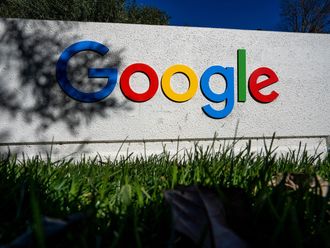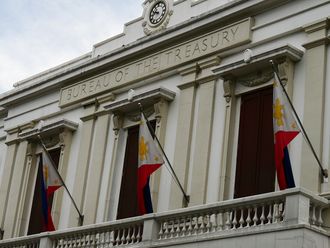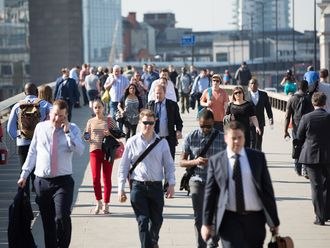Washington: The US economy remained sluggish early in the second quarter as high gasoline prices crimped consumer spending and bad weather helped push pending home sales to a seven-month low in April.
Consumer spending increased 0.4 per cent for a tenth straight month of gains, the Commerce Department said on Friday, after rising 0.5 per cent in March.
But prices rose 0.3 per cent, leaving spending up just 0.1 per cent and incomes stagnant when adjusted for inflation.
Tornadoes and floods, which lashed parts of the country last month, were blamed in part for an 11.6 per cent plunge in contracts to buy previously owned homes last month.
"We see the soft patch of the first quarter bleeding, at least, into the first half of the second quarter," said Robert Dye, senior economist at PNC Financial Services in Pittsburgh. "We will see again a consumer that can keep pace with the economy, but cannot drive the economy forward."
Recent data including retail sales and industrial output have been soft, prompting economists to lower their growth forecasts for the second quarter. Further cuts are likely this week should May auto sales come in very weak.
Second-quarter gross domestic product forecasts are currently ranging between a 2.5 per cent and 3 per cent rate.
The government reported on Thursday that consumer spending — which accounts for about 70 per cent of US economic activity — grew at a tepid 2.2 per cent annual rate in the first quarter, slowing from a four per cent clip in the final three months of 2010.
That contributed to holding back overall economic growth to a 1.8 per cent pace during the quarter after a 3.1 per cent rate in the October-December period.
With much of the slowdown attributed to what US policymakers see as temporary factors, such as high commodity prices and supply chain disruptions because of the earthquake in Japan, the Federal Reserve is not expected to worry too much about the pace of recovery.
The US central bank is expected to keep its ultra-easy monetary stance after it wraps up its $600 billion (Dh2.2 trillion) government bond-buying programme in June before looking at ways to withdraw some of the stimulus it has lent the economy.
Incomes stagnant
US financial markets were little moved on the data. Stocks rose, while government debt prices fell modestly. The dollar fell against a basket of currencies.
The high gasoline prices swallowed almost all the increase in incomes from US tax cuts enacted in December.
Economists worry that stagnant incomes — which have failed to keep up with inflation — will continue to impede spending even though prices at the fuel pump are starting to fall.
So far, consumers have resorted to saving less and some are tapping into their savings to maintain spending. Incomes rose 0.4 per cent last month, but disposable incomes adjusted for inflation were flat for a second straight month.
Real incomes have not grown this year and the saving rate stayed at a two and a half year low of 4.9 per cent in April. According to the Commerce Department's chief economist, Mark Doms, Americans saved $82 less over the past four months.
"Consumers have dipped into savings in order to make it through this challenging environment," said Michael Feroli, an economist at JPMorgan in New York.












